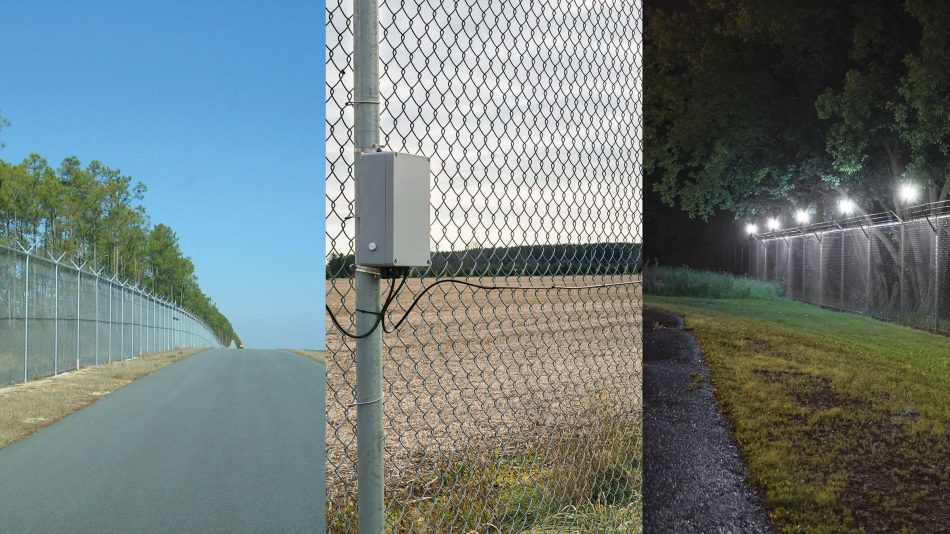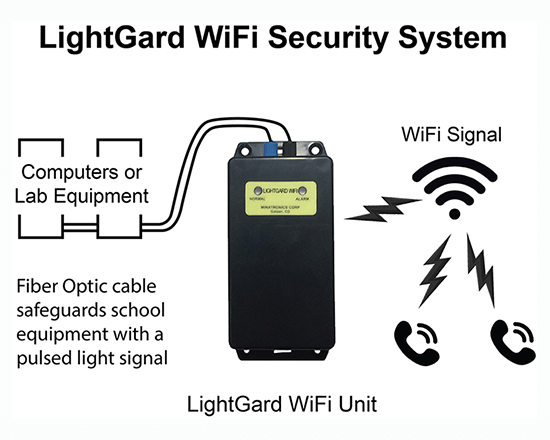Key Factors of Fiber Optics Infrastructure for Security Installations You Need to Know
Enhance Your Safety And Security With Advanced Fiber Optic Security Equipments
In an age where safety is vital, innovative fiber optic safety and security systems provide a compelling option for boosting safety across numerous settings. These systems not only boast remarkable transmission capacity and speed for high-resolution surveillance yet also use exceptional resilience versus outside interferences. As organizations progressively seek trustworthy methods to shield their possessions, the integration of ingenious innovations like AI and IoT within fiber optic frameworks increases crucial inquiries about their performance contrasted to standard systems. What implications do these innovations hold for future security measures?
Benefits of Fiber Optic Security
Harnessing the benefits of fiber optic modern technology significantly boosts safety systems across different applications. Among the primary advantages is the increased data transfer capacity, enabling the transmission of huge amounts of data at broadband. This is particularly critical for real-time video monitoring, where high-resolution feeds can be sent without latency, making sure prompt feedback abilities.
In addition, optical fiber exhibit superior resistance to electromagnetic interference, which is crucial in environments with prospective signal disturbances. This dependability makes sure regular efficiency in important protection operations. Additionally, fiber optic wires are less vulnerable to tapping and unauthorized accessibility compared to typical copper wiring, therefore enhancing data honesty and discretion.
One more notable advantage is the resilience of fiber optic systems; they are extra resistant to ecological variables such as wetness, temperature level fluctuations, and harsh substances. This strength translates to lower upkeep expenses and longer lifespans for security setups.
Last but not least, the light-weight nature of fiber optic cables assists in much easier installment and directing, especially in complex facilities (fiber optic security system). Inevitably, the integration of fiber optic modern technology right into protection systems not only reinforces protection steps however likewise optimizes operational efficiency
Key Features to Take Into Consideration
When evaluating fiber optic protection systems, numerous essential functions should be taken into consideration to make sure ideal efficiency and performance. Initially, evaluate the system's detection array and level of sensitivity; a substantial array enables keeping an eye on large locations, while high level of sensitivity makes sure that also small disruptions are discovered without delay.
Following, think about the integration capabilities of the system. A fiber optic protection system must perfectly user interface with existing security steps such as cameras and alarm systems, creating a cohesive security network.
Longevity and ecological resistance are likewise essential functions. Make certain that the system is designed to withstand rough weather problems and potential physical hazards, as this will certainly prolong its operational life expectancy.

Finally, explore the scalability of the system. A durable fiber optic security system should be easily expanding to suit future requirements without considerable overhauls. By thoroughly thinking about these attributes, you can pick a fiber optic protection service that improves safety and safety and security in your setting.
Setup Refine Summary
To successfully apply a fiber optic safety and security system, an organized installment process is necessary. This process begins with a detailed website assessment to figure out the particular safety and security demands and to recognize optimal locations for fiber optic cords and protection tools. Following this analysis, the setup group will develop a thorough plan, consisting of cord paths, essential equipment, and conformity with neighborhood regulations.
Next, the installment includes laying the fiber optic cables, guaranteeing they are protected from ecological aspects and physical damages. Correct handling strategies are essential, as fiber optic cable televisions are delicate and can be conveniently harmed. After the cabling is set up, connectors and terminations are thoroughly completed to make certain signal integrity.
The subsequent phase includes mounting security devices such as cameras, activity detectors, and alarm system systems, all incorporated with the fiber optic network. Strenuous screening is conducted to validate that all components are working correctly and to make certain ideal efficiency.

Contrasting Fiber Optic to Standard Solutions
The development of safety and security innovation has resulted in significant innovations in the comparison in between fiber optic systems and standard copper-based systems. Fiber optic systems use light to transmit data, providing superior transmission capacity and rate contrasted to their copper counterparts. This results in boosted data transmission abilities, making fiber optics ideal for high-resolution video clip security and real-time monitoring.
Additionally, fiber optic wires are resistant to electromagnetic disturbance, minimizing the possibility of signal destruction caused by exterior elements. This particular makes sure regular performance, also in challenging environments. On the other hand, typical copper systems are much more susceptible to interference, resulting in possible vulnerabilities in protection applications.
Toughness is an additional advantage of fiber optic systems. They are much less vulnerable to damage from environmental aspects such as moisture and temperature variations, which can jeopardize copper wiring. Fiber optics are lighter and thinner, permitting for much easier installation and decreased physical impact.
Nevertheless, traditional systems have a tendency to have reduced initial prices, making them eye-catching for budget-conscious tasks. While fiber optic systems may call for a higher ahead of time financial investment, their lasting benefits-- such as reduced maintenance costs and better reliability-- frequently exceed the preliminary expenditure, positioning them as a premium selection for contemporary safety and security requirements.
Future Patterns in Safety And Security Modern Technology
Emerging patterns read the article in safety innovation are positioned to transform the landscape of surveillance and risk detection - fiber optic security system. As companies progressively deal with innovative dangers, technologies such as man-made knowledge (AI) and artificial intelligence (ML) are ending up being integral to security systems. These technologies boost the capacity of fiber optic systems by allowing real-time data analysis, identifying abnormalities, and automating feedbacks to possible breaches
Additionally, the integration of the Web of Points (IoT) is transforming safety and security frameworks. IoT gadgets can supply detailed situational understanding and assist in seamless interaction between various protection components. This interconnectedness these details enables for more reliable surveillance and faster occurrence feedback times.
Biometric verification is also obtaining energy, supplying a higher degree of safety with distinct physical characteristics. As this modern technology evolves, it is likely to be incorporated right into fiber optic systems for enhanced gain access to control.
Conclusion
In final thought, progressed fiber optic safety and security systems stand for a substantial innovation in safety and monitoring modern technology. Their exceptional transmission capacity, resistance to disturbance, and sturdiness facilitate trusted tracking and information stability. As see this page these systems incorporate AI and IoT capacities, they boost the overall protection structure, making certain robust defense for assets. The shift from standard systems to fiber optic remedies reflects a growing pattern towards a lot more reliable and reliable protection steps in a significantly intricate technological landscape.